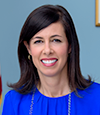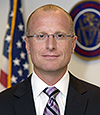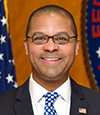Is the FCC Connecting America?
Friday, April 1, 2022
Weekly Digest
Is the FCC Connecting America?
You’re reading the Benton Institute for Broadband & Society’s Weekly Digest, a recap of the biggest (or most overlooked) broadband stories of the week. The digest is delivered via e-mail each Friday.
Round-Up for the Week of March 28 - April 1, 2022

On March 31, the House Commerce Committee's Subcommittee on Communications and Technology held a hearing called "Connecting America: Oversight of the FCC." Each of the current four Federal Communications Commissioners testified before the subcommittee, led by Chairwoman Jessica Rosenworcel and including Brendan Carr, Nathan Simington, and Geoffrey Starks.
Rep. Mike Doyle (D-PA) chaired the hearing. He praised the FCC's bipartisan work over the past 14 months, operating with two Democrats and two Republican commissioners. He said that he hoped the Senate will soon confirm Gigi Sohn, President Joe Biden's nominee for the FCC's open fifth seat.
In his opening remarks, House Commerce Committee Chairman Frank Pallone (D-NJ) noted how broadband and connectivity have proven essential to everyone’s lives. He stated that, during the COVID-19 pandemic, Congress enacted a number of programs administered by the FCC to help people afford and adopt broadband service:
- The Emergency Broadband Benefit was established by the Consolidated Appropriations Act, 2021, creating a $3.2 billion fund to make broadband service more affordable for eligible households.
- The Emergency Broadband Benefit Program was then modified, given increased funding, and converted into a long-term program—the Affordable Connectivity Program—in the Infrastructure Investment and Jobs Act. The Affordable Connectivity Program provides eligible households a discount on their monthly internet bill, and in some cases, a one-time discount on a connected device.
- In the American Rescue Plan Act, Congress established the Emergency Connectivity Fund, a $7.7 billion program to help students, faculty, and library patrons access the internet at home by providing free internet connectivity and devices through schools and libraries. As of March 7, 2022, the FCC had distributed over $4.69 billion to schools and libraries.
Congress has also tasked the FCC with improving its data on where broadband service is and is not available. The FCC has been collecting subscription and connection data for broadband and telephone service since 2000. Enacted in 2020, the Broadband Deployment Accuracy and Technological Availability Act (Broadband DATA Act) requires the FCC to issue new rules to collect granular broadband availability data, to use such data to create maps, and to establish a process to verify the accuracy of such data. In February 2021, Chairwoman Rosenworcel established an interagency broadband task force to implement the Broadband DATA Act, and the FCC announced that providers can submit the required data beginning June 20, 2022, and ending September 1, 2022.
In her remarks, House Commerce Committee Minority Leader Cathy McMorris Rodgers (R-WA) stressed the accomplishments of the private sector, highlighting increased speeds delivered in broadband providers' most popular service tiers, the narrowing digital divide, and decreasing broadband prices. “We should embrace the success of private sector innovation to ensure all Americans have access to reliable broadband,” she said.
Rep. Bob Latta (R-OH) echoed Rep Rodgers and went on to question why broadband adoption is still a problem:
"If cost is the primary driver of non-adoption, then theoretically, every American who has broadband services offered in their community should have broadband. But that is not the case, and we need to seriously consider what role, if any, the government should play in encouraging adoption given the numerous private sector programs in place."
Commissioners' Testimony

In her prepared remarks, Chairwoman Rosenworcel highlighted three bipartisan accomplishments under her leadership aimed at bridging the digital divide:
- Launching the Emergency Broadband Benefit, the nation’s largest-ever broadband affordability program, and transitioning it into the Affordable Connectivity Program which now serves over 11 million households. The FCC is working on how to expand outreach so more eligible households know of and enroll in the program.
- Connecting more than 12 million students at home and bridging the Homework Gap through the Emergency Connectivity Fund.
- Awarding nearly $450 million in support for telemedicine efforts during the pandemic. These funds have been used to provide equipment and services that hospitals use to remotely diagnose and evaluate patients as well as enhance the telehealth services they provide on-site. In addition, the agency has committed over $98 million to support expanded healthcare monitoring programs using new technologies through its Connected Care Pilot Program.

Commissioner Carr raised four concerns about the funding Congress has made available over the last few years to bridge the digital divide:
- A worrying lack of coordination across various agencies and their respective broadband programs. "The agencies’ apparent lack of coordination is compounded by the fact that they are relying on differing and sometimes divergent standards both in terms of identifying areas eligible for funding and the types of networks that qualify for support," he said.
- An apparent lack of adequate tracking, measurement, and accountability standards.
- Many of the policies guiding the expenditure of these broadband dollars are poised to leave rural communities and unconnected Americans behind.
- Possible waste, fraud, and abuse.
"We must meet the disconnected where they are," said Commissioner Starks. "For tens of millions of Americans, the price for broadband is just too high. A recent study by Education Superhighway found that 18.1 million households, home to 47 million people, remain offline simply because they cannot afford an internet connection. Millions more have made difficult sacrifices to keep their broadband service. No family should have to choose between keeping the lights on and a broadband connection, but we know that they do." Commissioner Starks is leading an effort to create a pilot project to expand Affordable Connectivity Program participation by households that benefit from Federal Public Housing Assistance. "There is a clear synergy between housing and connectivity; if we are helping a family secure housing, we should be able to help them secure an online connection in that home," Commissioner Starks said.

In his remarks, Commissioner Simington did not address broadband or the digital divide.
Highlights from the Q&A
The headline-grabbing news from the hearing may well be an update on the FCC's progress on more-accurate broadband maps. The FCC recently announced that it will begin collecting data from broadband providers in June and will conclude the process by September 1. During the hearing, Chairwoman Rosenworcel stated that the FCC will publish new broadband maps this fall and make them available for review by stakeholders. Those maps, in turn, will be used to prioritize broadband deployment funding that will be allocated to the states by the Department of Commerce's National Telecommunications and Information Administration.
Under questioning from Rep. Rodgers, each of the four commissioners indicated that they are not in favor of broadband rate regulation. Rep. Rodgers noted that she is working with Chairman Pallone on legislation, the Satellite and Telecommunications Streamlining Act, that would update and streamline the FCC's satellite licensing rules to encourage satellite investment in the United States. “Satellite technology is a viable solution to providing connectivity in hard-to-reach areas with speeds Americans need," said Rep. Rodgers. “Let’s encourage this and more innovation, and make sure our policies and regulations keep pace.” Chairwoman Rosenworcel pledged to work with the committee on reforming the FCC's rules.
During their questioning, Republican members of the subcommittee stressed 1) the need to focus on areas of the country that currently have no access to broadband service; 2) preventing "overbuilding" in areas that already have access; and 3) preventing waste, fraud, and abuse in the broadband programs overseen by the FCC.

On the other side of the aisle, Democrats wanted to hear about how the FCC can better reach eligible households that are not yet participating in the Affordable Connectivity Program or the Emergency Connectivity Fund. Chairwoman Rosenworcel stressed that the FCC needs to work with trusted community partners to enroll more eligible households. The FCC is currently considering how best to do that. And Commissioner Starks has taken the lead in fashioning a pilot program that will try to increase Affordable Connectivity Program participation and broadband adoption for participants in federal housing programs.
A few Democrats asked about the relationship between the Affordable Connectivity Program and the FCC's Lifeline program which also provides low-income households with discounts on monthly connectivity costs. Just last month, the Benton Institute for Broadband & Society noted that the Affordable Connectivity Program represents a turning point for Lifeline and universal service. Chairwoman Rosenworcel and Commissioner Starks noted the importance of the two programs. Chairwoman Rosenworcel said the FCC is aiming to make enrollment for eligible households simpler and easier while also preventing waste, fraud and abuse.
Few Fireworks
Reps. Rodgers and Latta called for an FCC oversight hearing back in May 2021. At the time, they expressed concerns about the Emergency Broadband Benefit (EBB) program, the Emergency Connectivity Fund, broadband mapping, and Chairman Rosenworcel's "commitment to free speech." The latter issue never arose during the hearing and, for the most part, commissioners were praised for their bipartisan efforts to stand up the broadband programs created by Congress.
Quick Bits
- FCC Announces $313 Million Through Rural Digital Opportunity Fund
- FCC Extends Prior COVID Lifeline Program Waivers to June 30, 2022
- NTIA Hires Angela Thi Bennett as First-Ever Digital Equity Director (National Digital Inclusion Alliance)
- Regional Utility Districts Can Help Fill Gaps in Broadband Service (Pew Charitable Trusts)
Weekend Reads (resist tl;dr)
- States Considering Range of Options to Bring Broadband to Rural America (Pew Charitable Trusts)
- Should States Fund Municipal Broadband and Cooperatives? (Rockefeller Institute of Government)
- Here’s what new census data says about broadband in the US (Fierce)
ICYMI from Benton
- What the American Rescue Plan is Doing for Broadband (Kevin Taglang)
- Introducing the Affordable Connectivity Program (Kevin Taglang)
- How the FCC Will Help Schools and Libraries Bridge the Digital Divide (Kevin Taglang)
- Introducing the Emergency Broadband Benefit Program (Kevin Taglang)
- Congress Provides More Money for Rural Broadband Deployment (Kevin Taglang)
Upcoming Events
Apr 6—Disinformation and the Erosion of Democracy (University of Chicago)
Apr 6—Infrastructure Investment and Jobs Act Broadband Programs Pre-NOFO Technical Assistance Webinar #3 (NTIA)
Apr 7—Second Public Hearing On Broadband Consumer Labels (FCC)
Apr 13—The Tech That Comes Next (New America)
Apr 21—Open Meeting (FCC)
Apr 26—Consumer Advisory Committee (FCC)
Apr 27—Infrastructure Investment and Jobs Act Broadband Programs Pre-NOFO Technical Assistance Webinar #4 (NTIA)
The Benton Institute for Broadband & Society is a non-profit organization dedicated to ensuring that all people in the U.S. have access to competitive, High-Performance Broadband regardless of where they live or who they are. We believe communication policy - rooted in the values of access, equity, and diversity - has the power to deliver new opportunities and strengthen communities.
© Benton Institute for Broadband & Society 2022. Redistribution of this email publication - both internally and externally - is encouraged if it includes this copyright statement.
For subscribe/unsubscribe info, please email headlinesATbentonDOTorg






